What a beautiful day out we spent at Byxbee Park in Palo Alto! Along with that grand breath of fresh air, my AP Bio class got to observe the soil and plant species of the tidal marshes by the San Francisco Bay through the Save the Bay‘s DIRT program for high school teenagers. Save the Bay is the largest protection and restoration organization in the Bay Area since 1961 and works to protect the beautiful wildlife and biodiversity that we all love!
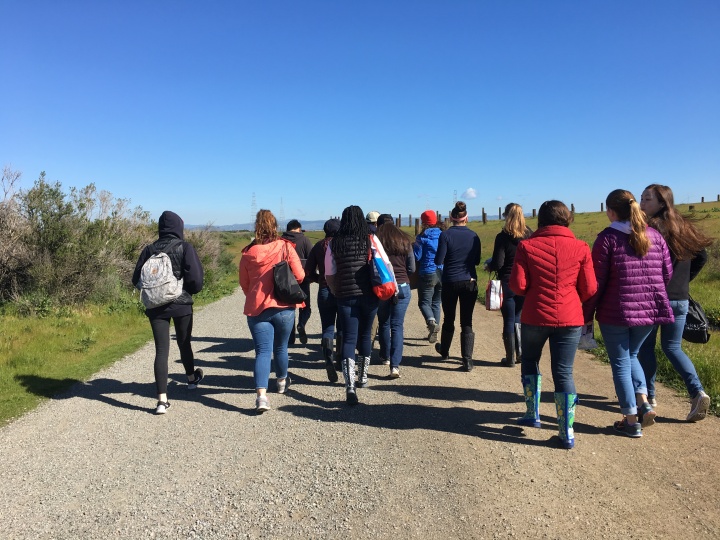
Team AP Bio takes on Byxbee Park!
First, our leaders Silas and Rachel explained the history of harm to the San Francisco Bay. In the 1900s, when industries were becoming very prominent and the government forced no restrictions, the Bay was a dumping ground for all of the waste and byproducts of civilization and industrialization. As the population grew, areas like eastern San Francisco (the Embarcadero/Ferry Building area) and even the entire city of Foster City were built by landfills. What shocked me the most was the commercial salt farming around the San Jose area. Parts of the Bay are still blocked off so the water can evaporate multiple times over to leave us with salt for commercial usage.
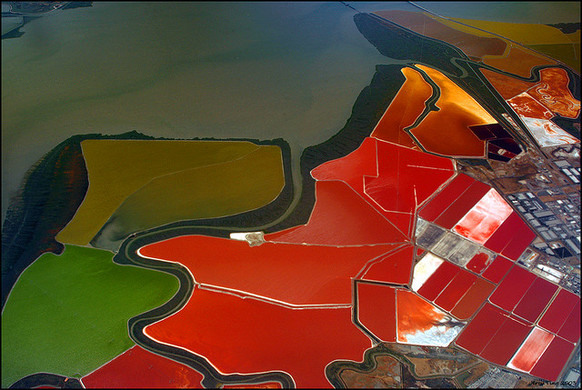
The salt ponds near San Jose are visible from a plane window. Photo courtesy of Atlas Obscura
In order to combat the damage done to our bay, the Save the Bay program has restored the tidal marshes and its diversity, which has taken many years of hard work, data collection (the program must collect data and present it to the government so the program can receive federal funds), and of course, time for the actual species to develop again. We high schoolers aided the process. We spent the day collecting data on the pH, salinity, moisture, and biodiversity of the soil around the marsh with our fancy scientific equipment. To observe the texture of the soil, we rolled the soil into balls (which looked a whole lot like falafel!) and squeezed the ball to see how much pressure it took to break the ball. The more pressure the soil required, the finer the soil was.
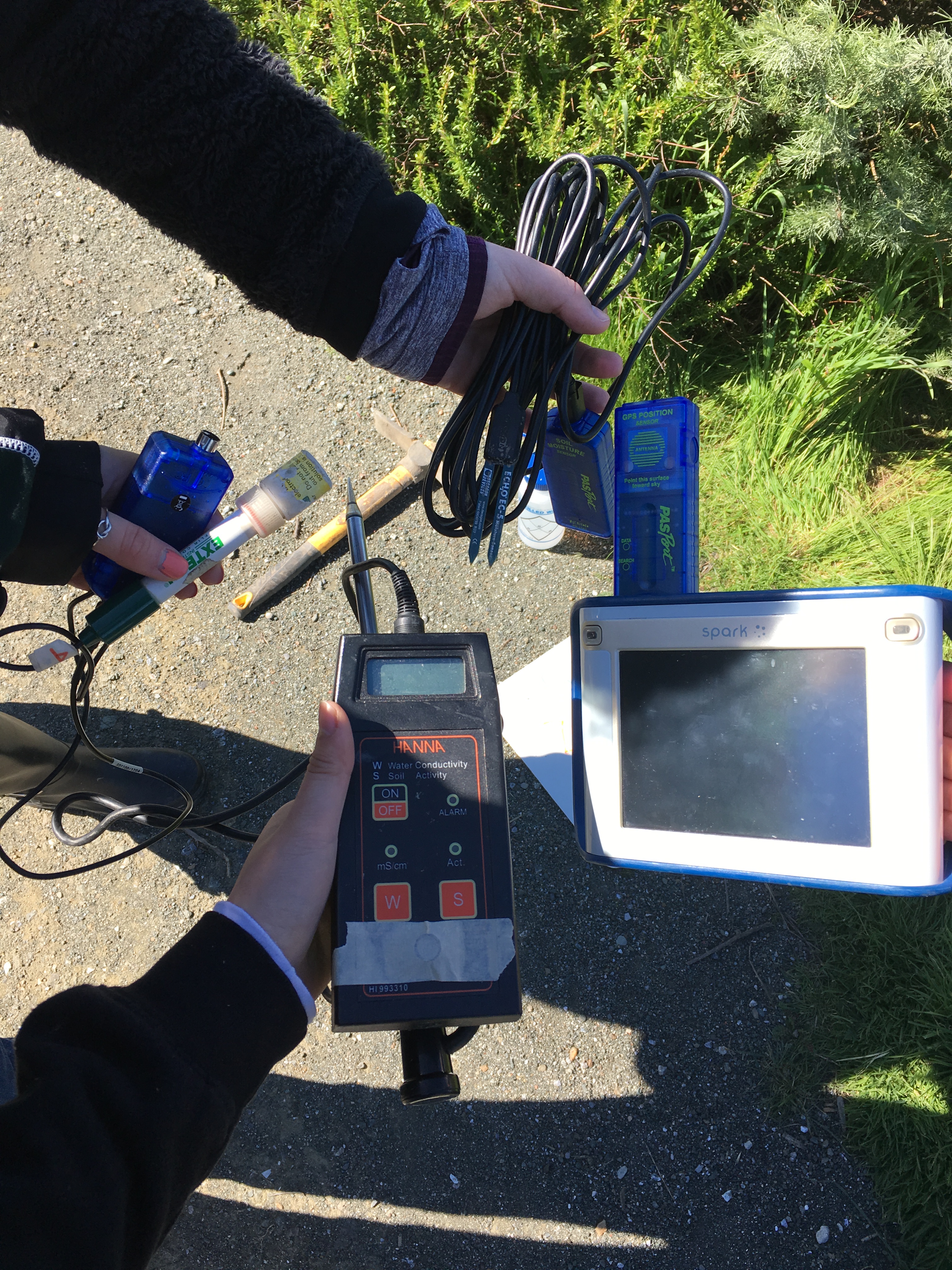
Top: soil moisture detector, right: GPS and screen to show the data points, bottom: copper conductivity measuring device (for salinity), left: pH detector
Some of the different plants we saw were the California Sage (smelled amazing, but looked more like thyme or rosemary than it did a sage leaf because the California species is drought resistant!), fleshy jaumea, Russian thistle, salt grass, California buckwheat, and pickleweed. We saw lots of non-native annual grass species, most of which were hard to specify. In measuring biodiversity, we noticed that in the areas where the invasive species lived, there was a much lower range of other species local to the tidal marsh. (See in the graph below.) This goes back to what we learned in class – the invasive species have no predators, so all they do is reproduce, reproduce, reproduce! They take the resources that the native species are competing for, but outcompete the local species.
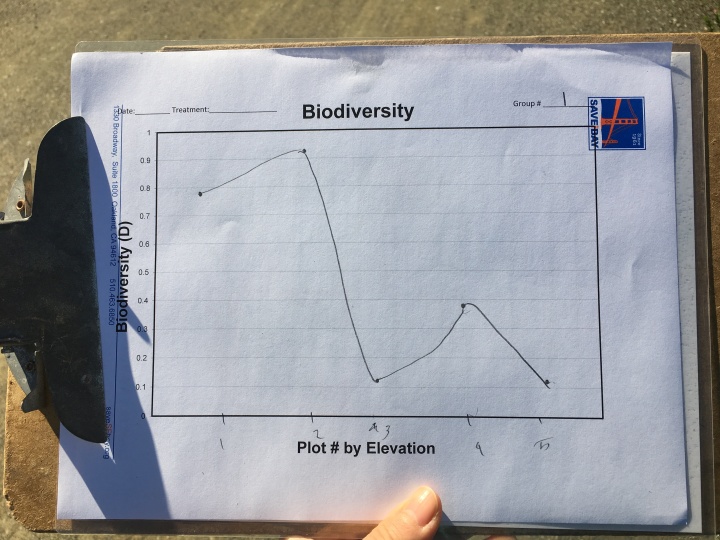
Plot #3 was on the steeper, hilly area, where non-native grass dominated. There were few other plant species living in the area, meaning the invasive grasses took the land and resources from the local plants.
Looking out into the marsh, I noticed that there was a distinct line where the plants were really green and where the plants were really brown. I asked my leader Rachel why that was, and she explained that the brown areas are where the tide rises to, so the plants get covered in sediment. This is actually a direct sign of tide and land elevation, which helps the researchers.
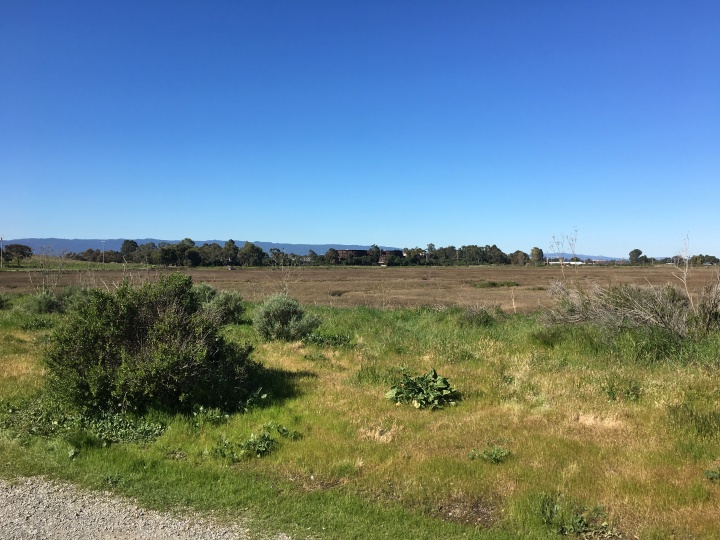
The hill that slopes down from the greener areas is not visible, but just below the hill, all the plants are brown.
Overall, I had a very insightful day out in the tidal marshes. I’m so glad I learned about our local environment that desperately needs our help in being saved. Normally, we learn about worldwide environmental damage to biodiversity like in the rainforests. Of course that is just as important and impacts the rest of the world immensely, but our home environment needs just as much attention. Before this field trip, I had no idea the Bay was a dumping ground. We need the government to protect our species!
I would highly recommend anyone to check out Save the Bay and its efforts to restore the natural beauty of the Bay Area!
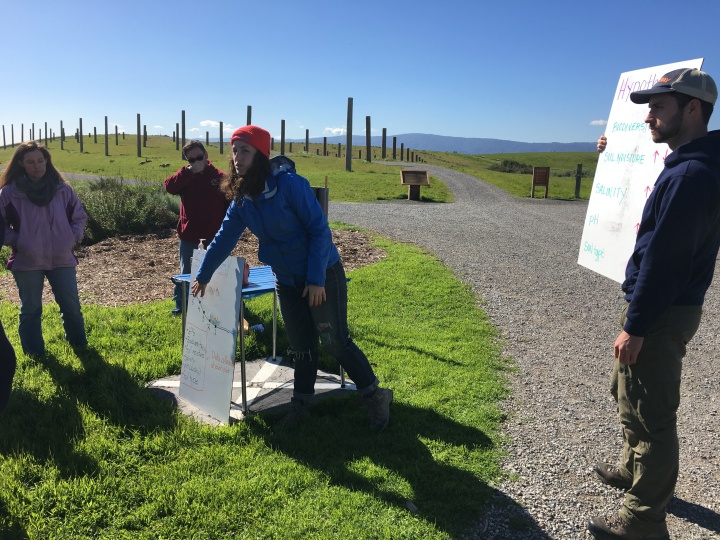
Save our bay!
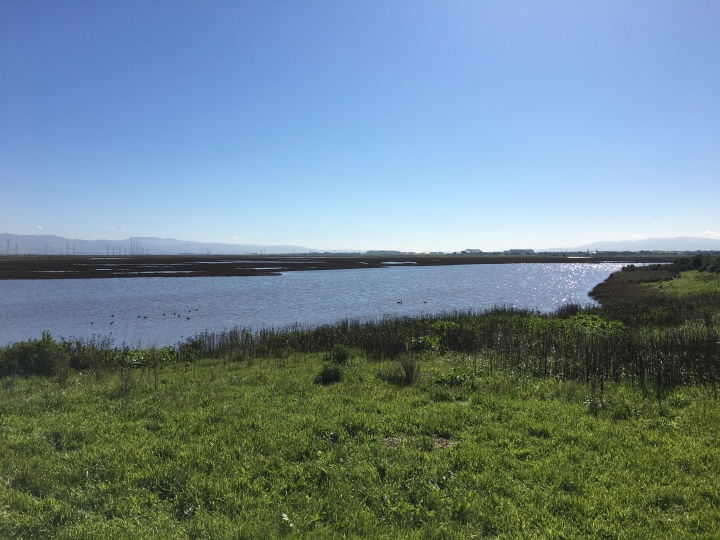
Can’t replace natural beauty 🙂

Michelle, The pictures you chose really enhance your post. The picture of the salt pools is amazing. It shows the major impact humans can have…how we can use nature to our benefit and that we should also focus on protecting nature. I am glad you enjoyed the day. It is always a highlight of the year. Just wait until we head out to the ocean in April!
LikeLike
Wow, I had no idea the bay was a dumping ground for industries. But again, it makes sense and it sounds very similar to my hometown in Hong Kong and in China. Pollution from the factories and cargo ships destroy all of the natural beauty. You know how I feel about civilization taking over trees and waters. My grandma’s original stilt house and countryside/island area is completely gone because of the modernization in Hong Kong. I can’t even canoe around there anymore!
I also had no idea that the San Jose area has salt farms. Next time we are on a plane and we fly from the south up to the north, I will be sure to look for them!
I loved your outfit that day. It’s nice to see all the photos of what you actually did all day! I would have eaten just as much as you did when you got home if I spent the entire day digging up soil.
LikeLiked by 1 person
Excellent summary of the day and great use of pictures to support your talking points! Your additional notes about government, funding, sage’s drought tolerance, and tidal reach really exhibit the things you learned out at the Baylands, and I’m proud to have been a part of it! Great job!
LikeLiked by 1 person